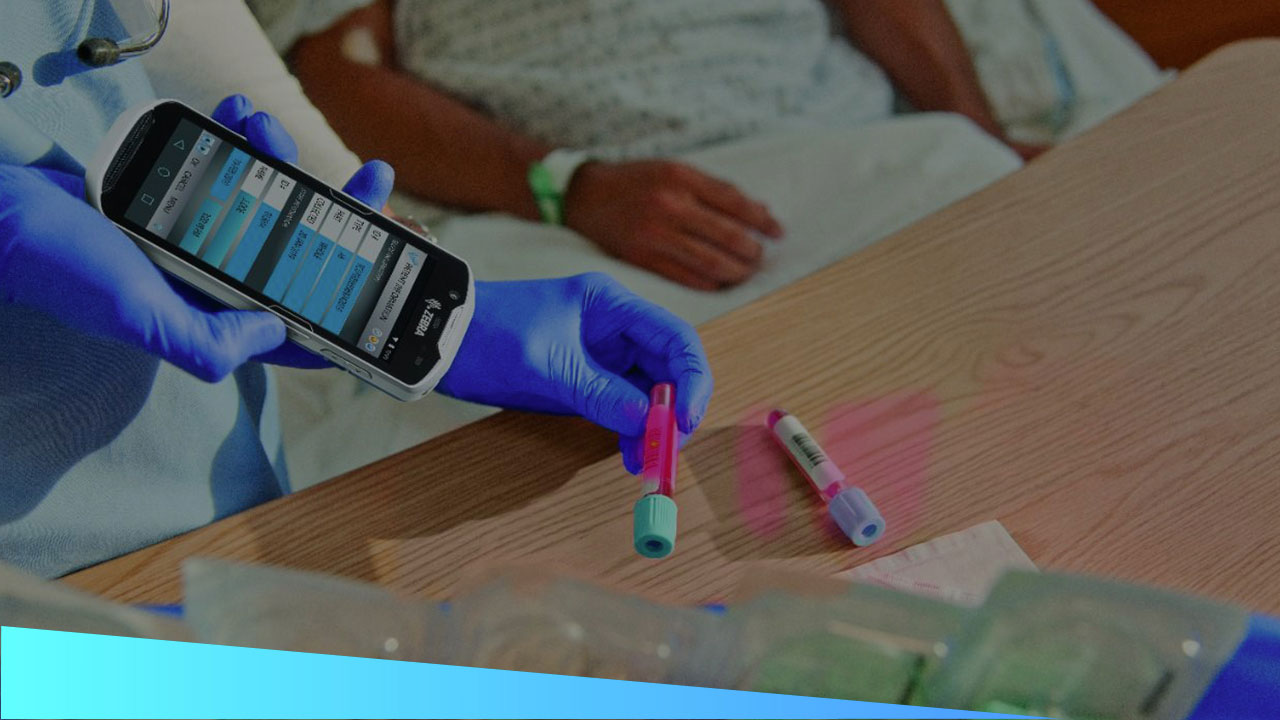Over the past two years, healthcare providers have faced some of the toughest patient care and operational challenges they’ve ever seen. As doctors, nurses and staff have battled to save lives and keep patients and themselves safe, we’ve all learned some crucial lessons in the importance of making the job of healthcare easier.
This is why our team at Ahearn & Soper is working closely with our healthcare clients to assess opportunities to ease the burden on care providers and improve care efficiency and accuracy moving forward. This is especially important as we finally turn the corner on the COVID-19 pandemic.
In this quick overview, we’ll touch on two key areas where we’ve been working with healthcare providers to streamline and optimize their clinical workflows and collaboration with the application of mobile computing and data capture technologies. Specifically, we’ll take a look at some examples involving solutions from Zebra Technologies, one of our strategic business partners and an industry leader in healthcare mobility, identification and tracking.
Implementing these two strategies can make a massive difference in the ease of healthcare operations as well as patient care outcomes and bottom-line cost-effectiveness. And they make a perfect complement to additional medication administration, specimen tracking and inventory management strategies that we’ll explore in future articles.
For now, let’s take a look at clinical workflows and collaboration and the two key ways you can streamline and optimize workflows and communications in these areas.
1. Clinical Workflows and Collaboration
Our strongest recommendation is always to make sure that physicians, nurses and staff are equipped with mobile computing technologies and smart badges that allow them to quickly and securely access patient records and decision support, communicate in real-time via voice and text, and coordinate care with touch-enabled workflows for better automation and efficiency.
A good example is Zebra’s TC52-HC healthcare mobile computer, which is an Android touch device that delivers all the tools that care providers need, all at lightning speed. This includes access to your EMR, mobile apps, barcode scanning, alerts, voice connectivity, video, and secure texting.
The TC52-HC is equipped with octa-core processing power, next-generation high-speed Wi-Fi, and expanded memory to enable all of this functionality and run multiple resource-intensive mobile apps simultaneously and with seamless speed and performance.
The TC52-HC can also be paired with a smart badge and single sign-on software, so staff can simply tap their badge to authenticate their identities and start using all the apps they need. They can even share devices by disinfecting them between users and simply tapping their badge to automatically sign out the previous user and sign in to start using the device themselves.
Once they sign in, each user’s experience will be customized with the right apps, access levels, permissions, and even contacts and communications. This is great for IT security and for maximizing the value of mobile devices by allowing them to be shared safely between users. But it also means that users can easily access everything they need to coordinate care and get more done at the patient’s bedside, at nursing stations, in offices or labs, or wherever they need to complete mission-critical tasks.
If your care providers and staff are having to go back-and-forth to desktop PCs or don’t have all the mobile apps and communication tools they need at their fingertips and wherever they go, then an improved clinical mobility strategy should be a top priority.
2. Real-Time Communications
Another advantage of clinical mobility is that you can unify all communications in a single mobile device. When a clinical mobile device such as Zebra’s TC52-HC is running Zebra’s Workforce Connect, a user can access video streaming, voice calls, voicemail, secure text messaging, and even PBX phone lines and push-to-talk from one mobile device.
For our hospital clients, this makes a world of difference because doctors, nurses and staff never have to juggle different devices for texting or push to talk and never have to be tethered to a workstation or PC to do video calls or to access their PBX calls or voice mail.
If you’re also using voice-enabled smart badges, you can configure the push-to-talk on your Zebra mobile device to be triggered by a simple tap of the ID badge. This way, users can pull up a contact from your directory and communicate instantly with clinical or non-clinical staff securely and easily.
Start Exploring the Right Technology Strategies for Your Healthcare Operations
To find out more about the technologies and strategies that hospitals are using to simplify workflows, automate key processes, and minimize the burden on care providers and staff, connect with us at Ahearn & Soper.
As a leader in automation, data capture and technology solutions for the healthcare industry since 1975, we’re on the front lines every day, helping hospitals and other medical facilities improve productivity and efficiency while making their employees’ jobs easier.
To get recommendations and answers to any of your questions, or to schedule a free consultation to review your operations and the best ways to optimize, contact us now at 1-800-263-4258 or through our website.

